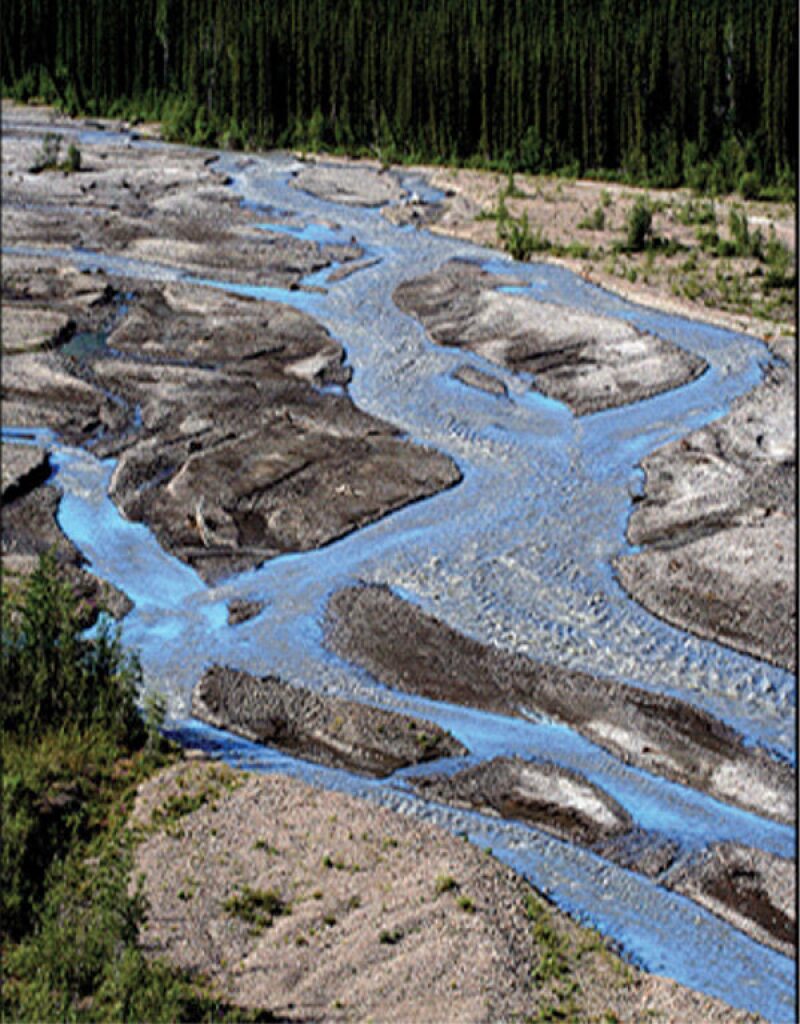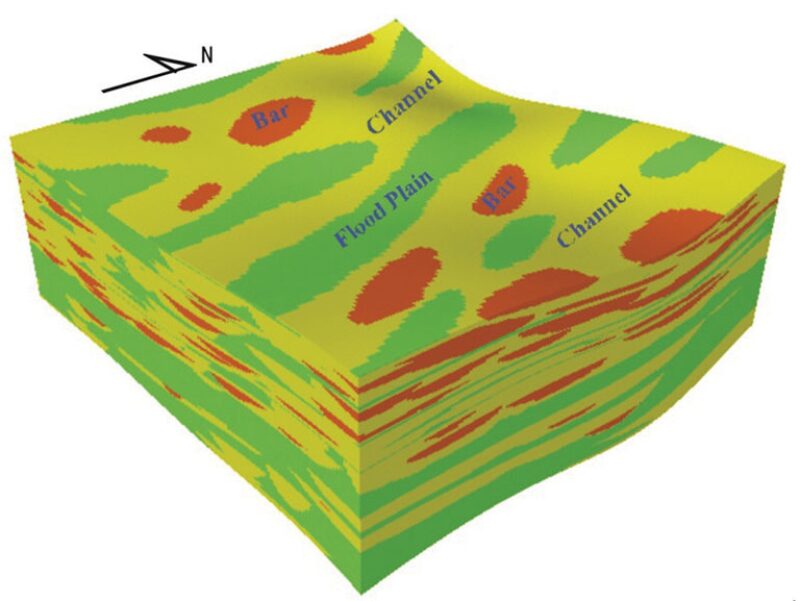Three observations have resulted from horizontal-well development in the Sulige tight gas field. First, well-location selection should be influenced by detailed geological research. Second, measurement while drilling (MWD) is the most effective technique in enhancing the drilling success rate. Third, stimulation treatments such as multistage hydraulic fracturing are the most effective way for gas wells to increase their deliverability.
Introduction
Tight sand gas, one of the main types of unconventional gas reservoirs, displays the most rapid development worldwide in recent years, especially since its successful development in the US. Tight gas resources are estimated to be 10 trillion m3 in China alone. China holds a large amount of tight-sand gas resources and has obtained good performance in exploration and production during its 11th Five-Year Plan period. The Sulige gas field in the Ordos basin, the Xujiahe gas field in the Sichuan basin, and the Denglouku gas fields in the Songliao basin all show typically successful exploration and production of tight-sand gas in China. Compared with geological settings and development backgrounds in North America, tight-sand gas in China has differing characteristics, including poorer original gas in place, increased depth, and lower net-pay thickness.
For tight-sand-gas development, low economic benefits are the main control factor. High costs in drilling, completion, and fracturing, coupled with low revenues from wellheads, scare investors away. From a technical perspective, low saturation, low production rate, and low estimated ultimate recovery (EUR) are constraints. Thus, technical innovations to improve production level and EUR are necessary. For tight-sand gas in the US, infill drilling was the predominant development strategy in the 1990s. For tight gas wells, drainage areas are usually small, the result of reservoir heterogeneity and poor petrophysical properties. Thus, infill drilling can effectively release the remaining gas left by the primary well pattern. The consequences for infill drilling include more gas derived from the reservoir and more costs associated with drilling and completion. In recent years, horizontal drilling and hydraulic fracturing, especially staged fracturing, have become more frequent. Compared with vertical wells, horizontal wells have the advantage of greater drainage area, which can effectively increase the EUR. Staged fracturing can effectively improve the flow matrix and can increase the production rate; thus, the two main factors causing poor economic benefits and constraining tight gas development can be effectively resolved.
For tight-sand gas in China, pilot development was carried out in the Sulige gas field in 2003. Vertical wells and cluster wells were drilled. But low production rate and EUR are still constraints. Technological innovations were developed for horizontal wells that allowed more-effective means of improving well-track efficiency and allowed penetration of more gas-bearing sands. Pilot production shows that well deliverability and EUR have been highly increased.
Wellsite Selection
Compared with conventional reservoirs, tight-sand-gas reservoirs have strong heterogeneity. Gas wells targeted at the “sweet spots” have a high production rate and EUR and better economic benefits, whereas gas wells at low-gas-saturation areas have a low production rate and EUR and fewer economic benefits.
Thorough geological research provides guidance for wellsite selection. Wells drilled at different locations have quite different deliverability and production rates. For braided-channel clastic deposits, channel filling, bar, splay, and floodplain are the main microfacies (Fig. 1 and Fig. 2). Gas wells located at the channel bar have good productivity, and wells at other locations have poor productivity. Thus, geological investigation for sand scale and distribution is of great importance. Sand geometry and superimposed model are key factors for geometric arrangements for horizontal drilling. For sands in the Sulige gas field, depositional models are established first and sand width, length, and thickness are investigated thoroughly on the basis of analysis of existing drilling data.


For wellsite selection, horizontal wells should be deployed at the location of the channel bar. Comprehensive data collection and analysis (including seismic, logging, and core data) are of great value in well-location optimization and well-track design. Well logging is the most effective way to diagnose the net pay. Reservoir prediction can be conducted on the basis of seismic interpretation. Seismic data hold a large amount of information, and plane distribution for petrophysical properties can be derived from seismic interpretation. High-richness areas (the “sweet spots”) can be detected. Plane distribution for net-pay thickness is also of great value for well-track design. For horizontal drilling, horizontal sections should not extend beyond the border of the net-pay contour line. The strike and dip of the well track should also be designed according to the sand distribution. In the Sulige field, drilling cases show that, when the track of the horizontal section is in accordance with the sand strike, the well can penetrate more sands. Also, the well dip should be consistent with the dip angle of the target layer.
Surveillance While Drilling
These measures have two effects. One is to ensure safety while drilling, and the other is to conduct real-time monitoring for the well track. In the Sulige field, gamma ray logging and gas logging are selected for well-path control. The gamma ray log has good response to lithology and can diagnose the target layers effectively. Mudstone has an obvious high value for gamma ray logging. In the Sulige field, mudstone and sandstone can be identified clearly through gamma ray logging.
Gas detection carried out by gas logging is effective in the identification of gas-bearing sands. The application of hydrocarbon indicators while drilling is an effective way to identify the gas content in sands. Gas-bearing sands have high gas content, and gas is released during drilling. Other data including drill cuttings and drilling time are also helpful for well-track surveillance. Drill cuttings are direct returns from the bottom of the hole and directly reflect lithological features. Drilling time can also reflect a lithological change. Mudstones are plastic and entail more drilling time; sandstones are elastic and require less drilling time. Comprehensive measurements while drilling can support well-path control effectively and can enhance the drilling success rate.
Stimulation Treatments
Stimulation is extremely important for tight-gas-sand development because there can be no economical productivity without stimulation treatments. Multiple-zone stimulations in a single operation for a vertical well and multistaged fracturing for a horizontal well are revolutionary compared with traditional fracturing. Currently, fracturing stages are not problematic from a technical viewpoint. The relationship between operation costs and incremental deliverability is the controlling factor. In the Sulige gas field, the thin layers on the reservoir profile were once the development problem. As five to eight zone stimulations in a single operation for vertical wells were implemented successfully, commingled production was realized and deliverability of straight wells was highly improved compared with nearly no natural productivity. With technical improvements in multiple-staged fracturing, horizontal drilling, which was unsuccessful before because of its high costs and low benefits, allows new progress. Ten or more stages can be operated for multistaged-fracturing treatments. The productivity of horizontal wells is almost three times that of vertical wells.
Development Strategy
Development strategy is one of the controlling factors for tight gas development. On the basis of experiences in the Sulige field, pilot development is the primary factor. Such a pilot development was implemented in 2000, and detailed geological research was carried out to clarify sands distribution. Well performance of the pilot pattern and interference well testing revealed the scale of the sands. Then, gas wells were drilled on the basis of these studies.
The second controlling factor is the zoning scheme. For fluvial sedimentary systems, high heterogeneity is a salient characteristic. Different areas in the gas fields have quite different petrophysical properties and levels of richness. Areas with high gas abundance should be developed first, and the use of horizontal drilling is a priority so as to increase economic benefits. Low-gas-abundance areas should be developed when sands distributions are studied more clearly. In the Sulige field, marginal blocks were put into production in recent years when more technical progress had been achieved. With innovations to drilling bits, drilling costs have been reduced from CNY 20 million to 8 million. With innovations to fracturing techniques, gas-well productivities have been improved from 20 000 to 80 000 m3/d for horizontal drilling.
The third controlling factor is infill drilling in the developed block. For high-gas-richness areas, pilot wells are not enough to produce the original gas in place. Infill wells can effectively increase the recovery ratio and the EUR. Wellsite and well-track design for infill wells should be conducted on the basis of existing wells and sand-distribution patterns. In the Sulige field, infill drilling was conducted in 2010 to increase production rate in developed blocks.
The fourth control factor is the -application of new technologies. In the Sulige field, digital oilfield-management techniques were implemented. Applications of digital management include production-data collection at the wellhead, remote data transmission, and installation of automatic shut-in/open facilities.
The last controlling factor is a proper development strategy. Tight-sand-gas reservoirs in China are categorized into three types: the multilayered stacked lenticular reservoir, the layered reservoir, and the massive reservoir. These three types of reservoirs vary greatly. Taking the Denglouku, Xujiahe, and Sulige fields as examples, tight gas sands in each field have their own characteristics. The target layers in the Xujiahe and Sulige fields are thin, but in Denglouku, the target layer is much thicker. Development strategies for these three fields are thus quite different. In the Sulige and Xujiahe fields, vertical wells are primary. Horizontal wells are deployed in high-gas-abundance blocks in the Sulige field, but in the Xujiahe field there is no horizontal drilling because of high water cut. In the Denglouku field, horizontal drilling is the first choice because of the field’s thick target layers.
This article, written by JPT Technology Editor Chris Carpenter, contains highlights of paper IPTC 16824, “Challenges of Horizontal Wells and Successful Cases for Tight-Sand-Gas Development in China,” by Jia Ailin, He Dongbo, Jia Chengye, Ji Guang, and Wei Yunsheng, PetroChina, prepared for the 2013 International Petroleum Technology Conference, Beijing, 26–28 March. The paper has not been peer reviewed. Copyright 2013 International Petroleum Technology Conference. Reproduced by permission.
